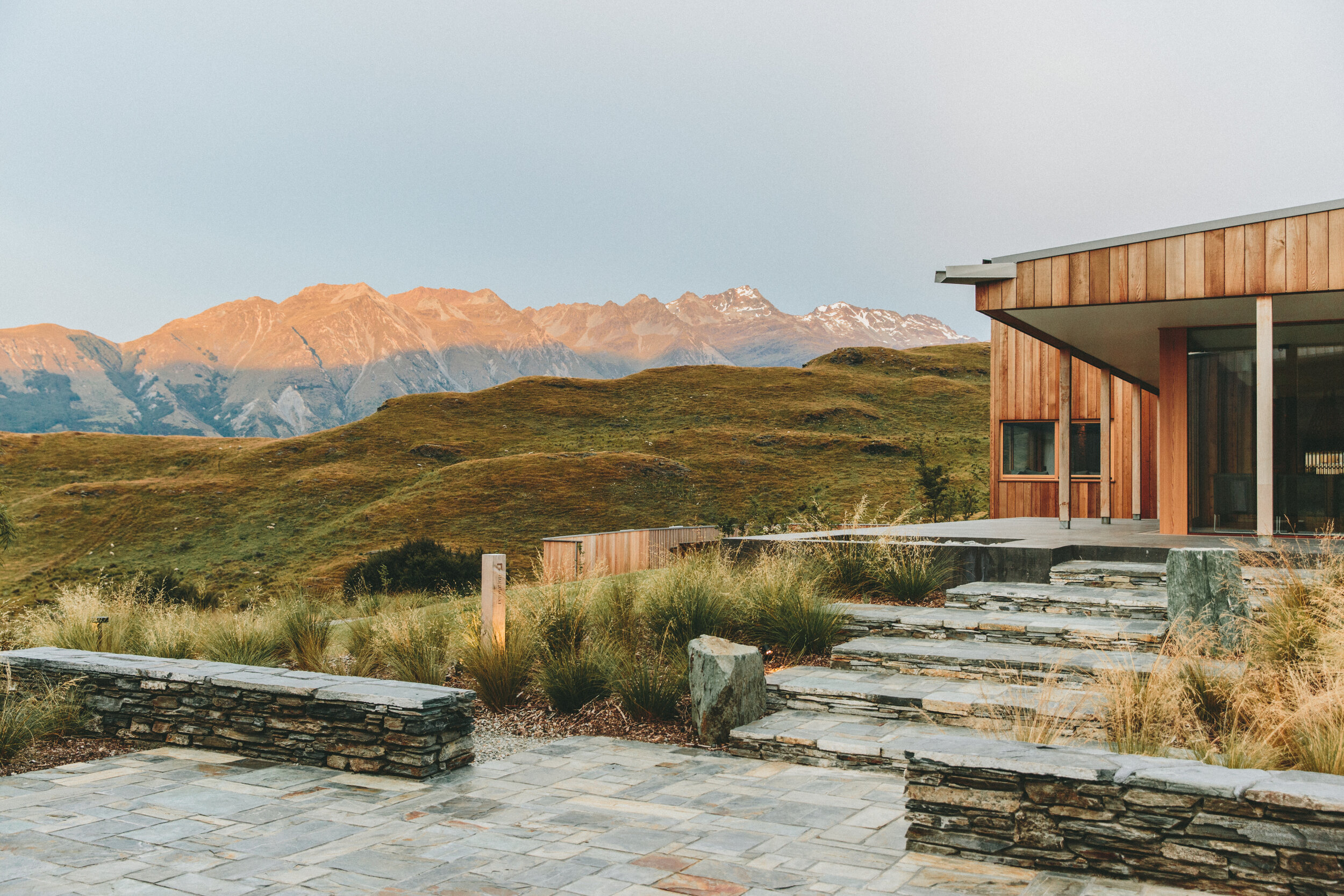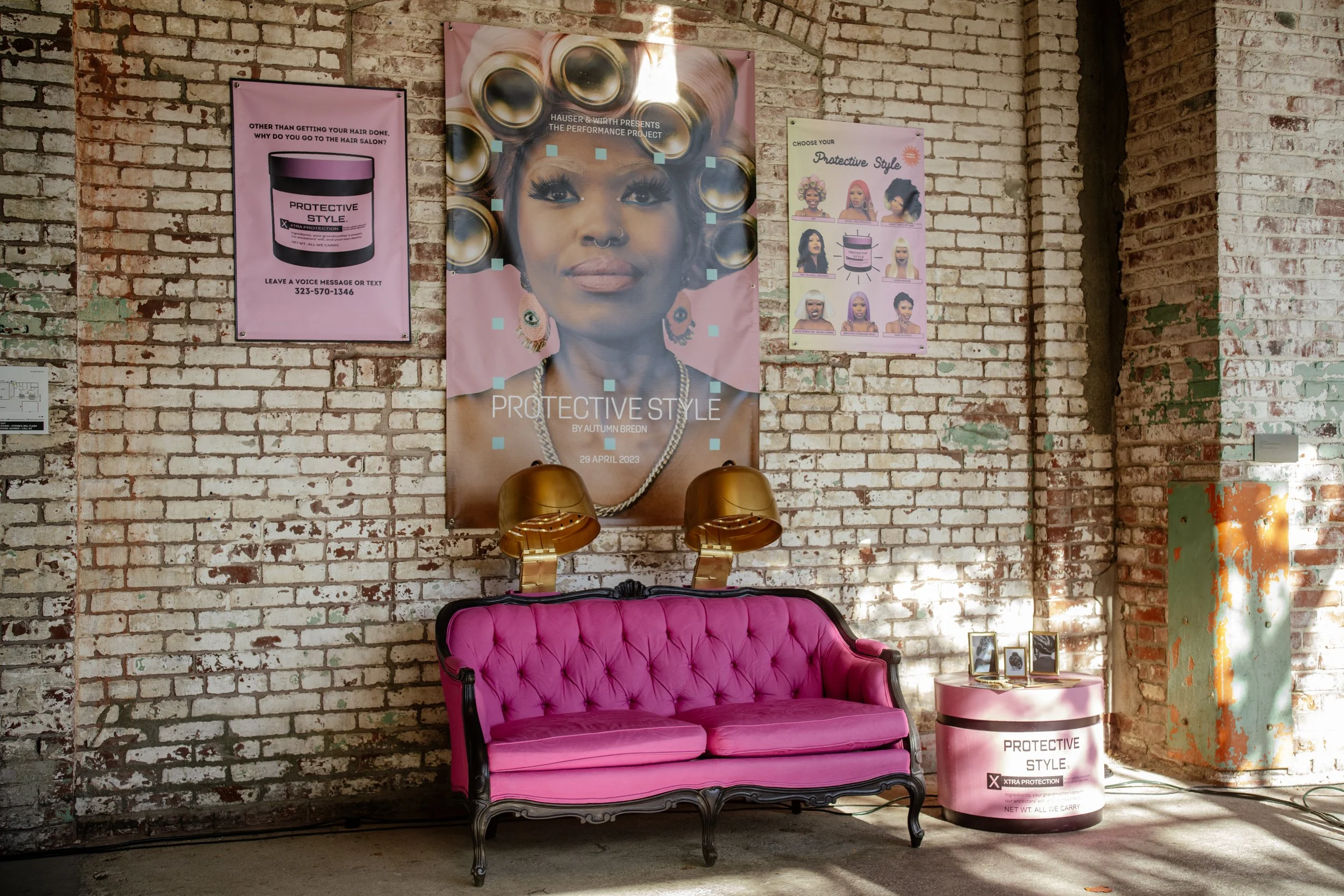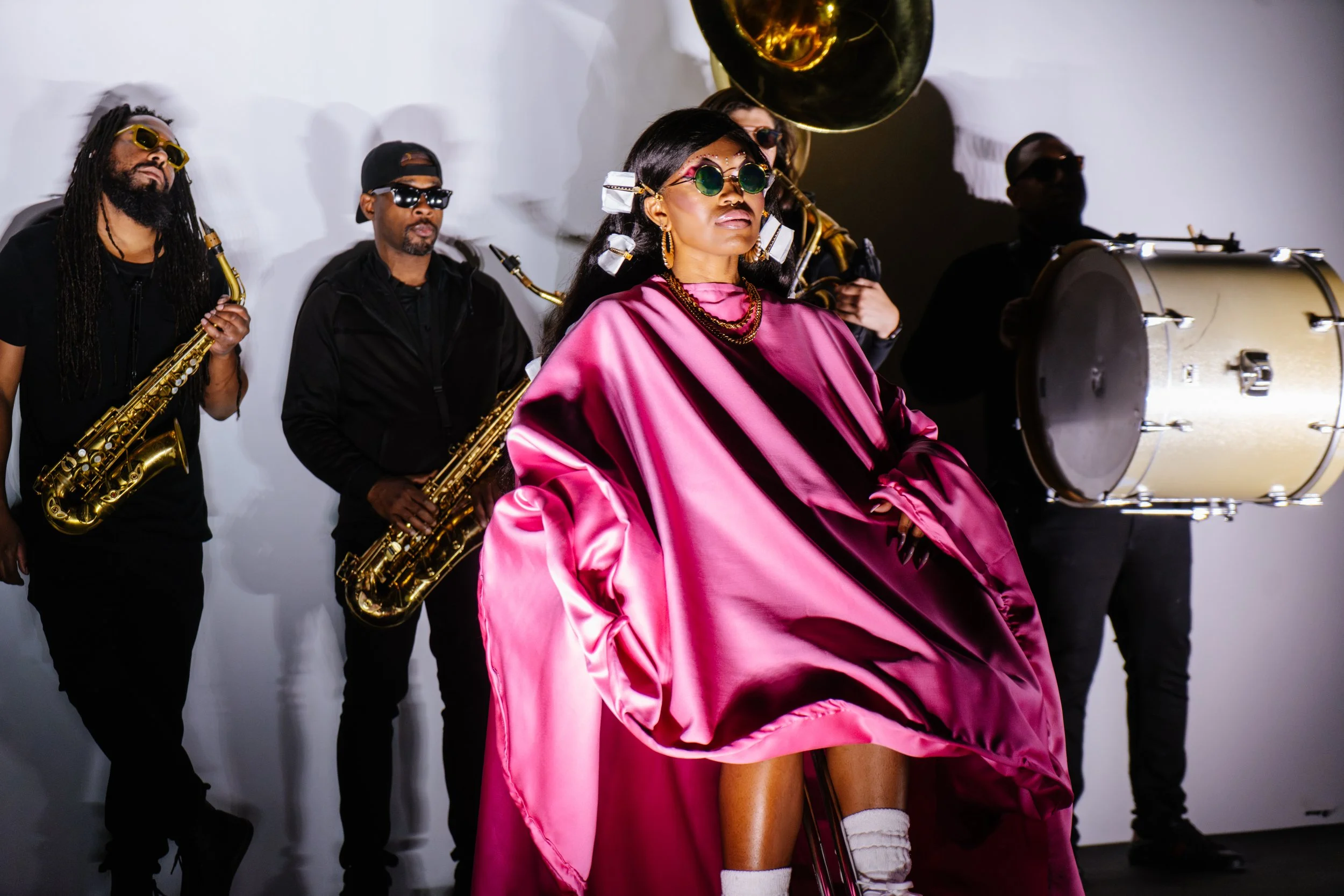
Buy the full version in digital or print.
Pink Resistence
Autumn Breon believes that artists model the world they want to live in. Her artwork portrays a world that is filled with care, abundance, and unapologetic joy.
By Javiera Luisina Cádiz Bedini
I meet multidisciplinary artist Autumn Breon on Zoom. It’s her LA morning and my Barcelona night, and when I ask where she’d like to start— past, present, or future— she looks at me with a smile and says, “Let’s jump around…time is not linear.” A fitting thought for an artist who, in preparation for her work (Don't) Use Me: Wadi Rum (2022) asked Black women around the world and especially Palestinian refugee women in Jordan, “If time didn't chain you, what would you do to feel free?”
Breon’s striking art is multidisciplinary, weaving performance, photography, installation, and collage. She graduated from Stanford University, where she studied Aeronautics & Astronautics and researched aeronautical astrobiology applications for NASA. Curious and information driven, her work is imbued with a method of scientific inquiry based on quantitative and qualitative research that sees the artist using her scientific background to arrive at clear, precise, and aesthetic solutions to social problems. For Breon, artists “[model the] world that [they] want to live in,” and she imparts an investigation into the visual vocabularies of liberation through a queer Black feminist lens.
For Breon, the politics of care is one way to counter oppression and enliven people’s inner power and beautification. Her Essentials exhibition at the Crenshaw Dairy Mart debuted the Care Machine (2023) – an elegant, bright pink vending machine that is showing during Frieze Los Angeles at NeueHouse Venice Beach and is traveling around the U.S. For this sculptural piece, she again turned to Black women to ask: “What items represent and provide care?” The responses led to including Haribos, Mentos, lubricant, Edge Control, Durex condoms, toothbrushes, tampons, sanitary pads, books (Toni Morrison's The Measure of Our Lives: A Gathering of Wisdom, and This is what I know about Art by Kimberly Drew), and boxes of abortion pills. It would be illegal to include actual tablets, but when you open the box, there is a QR code that takes you to the Plan C Pills website, which informs people on how to access abortion pills by mail in every U.S. state. The code also directs audiences to a hotline for emotional support. When trying to pay, audiences realize that the instructions say “Beauty is essential. Care is essential,” making all contents free of charge. The Care Machine depicts a strategic and deliberate move towards resistance and a raising of rituals that perpetuate self-love and importance. Both adornment and commodity, the articles in the machine are necessary and non-negotiable for the artist, reflecting not only a fierce politics of care, but a politics of refusal, an unwillingness to have aspects of women’s lives denied or diminished.
In her work, Breon carefully interlaces care to beauty, and she references the radical self-care that Black and Latina feminist writers like Audre Lorde, bell hooks, and Gloria Anzaldúa examined in the late sixties. Exposing the biases within the health system, these activist writers urged women of color to fight for care and protection as a form of self-preservation and happiness. Protective Style (2023) is a performance that took place in the downtown LA Arts District for Hauser & Wirth. Inspired by people like education activist Bernice Robinson and entrepreneur Madam C.J Walker, who revolutionized the very idea of the salon as a space of empowerment and learning, the performance saw Breon embodying the protagonist Esoterica Supreme.
“In it, the salon goes from being a place for 'gossip, hair upkeep and beautification' to a 'wormhole to Planet Esoterica.' This is an otherworldly sphere for ancestors that have departed Earth and it represents a planet of liberation, free from what the artist calls the 'delusions of white supremacy.'“
Breon is a master of multivalent meaning making, and in her work, she imparts a seriousness that is always amplified by a preponderance of color that mingles gravitas with joy. Pink is everywhere in Breon’s work (costumes, makeup, props, the stage sets), and so is gold – a color and object that Breon is careful to remind us of links to a much-occluded history of the Gold Rush. She points to how gold is “an adornment, but how it's also a commodity, the fact that black hands have been mining for gold for so long” and how it’s what brought so many people to California. Complex and multivalent, gold here is used to highlight the beauty of the performers of Esoterica and show their wealth and abundance of care.
Blue is another color-element Breon uses to determine water, and everything associated with it: rituals and the varied histories surrounding the sea as a contradictory space of leisure, forced transportation, and enslavement. On the day we meet, Breon tells me about three research-based projects that are closely related to the political frameworks of water: the performance Leisure is not a Luxury, the public installation Leisure Lives, and the accompanying performance Swag Surf in the Water, which were presented at Frieze Los Angeles last year. The artist begins by asking herself the question “What was happening on this soil before we [got] here?”, and she turns to both the land and sea to unearth and investigate the history of black leisure sites like Bay Street Beach (now Santa Monica Beach), where many Black people found a haven along the oceanfront during the first half of the 20th century. By bringing to the fore research from often-ignored archives that exalt important figures and national heroes like surfer Nicolás Rolando Gabaldón, Breon homes in on the beach as a site that challenges white supremacy in America. Here leisure goes against notions of what Black people were supposed to be doing according to white supremacy, while water is reimagined as a space of leisure, recuperating it from valences of the Middle Passage. Through celebration and participatory public art, the harsh truths and racist violence in America are uncovered, but so is the joy of everything that is antithetical to racial structures in the United States.
Breon’s face lights up when she tells me about “Nick”, California's first documented surfer of African American and Latino descent who participated in the sport at a time of segregation. She shares how he didn't own a car and would hitchhike to Malibu, where, more often than not, no one would stop for him. Autumn tells me how he took to paddling through Santa Monica Bay. I ask how long it would take and she immediately halts the conversation: “I'm pulling it up on maps right now. I'm curious.” It’s this very inquisitiveness that informs all her work: an insatiable quest for knowledge and for providing plinths for pioneering people whose history has not been celebrated enough. We lose our Zoom connection momentarily and when I see her face on the screen again, she eagerly says: “12 miles!” Imagine that.
Shortly before the end of our conversation, Breon is reminded of something she just read that she wants to share. She hurriedly gets up to fetch a book she’s been meditating on: Notes of Beauty by Christina Sharpe. She searches through the pages and finds “Ordinary Notes 51” and she gently quotes the words of Saidiya Hartman: “Beauty is not a luxury, rather it is a way of creating possibility in the space of enclosure, a radical act of subsistence, an embrace of our terribleness, a transfiguration of the given. It is a will to adorn, a proclivity for the baroque, and the love of too much.” She leaves me with this abundance.




